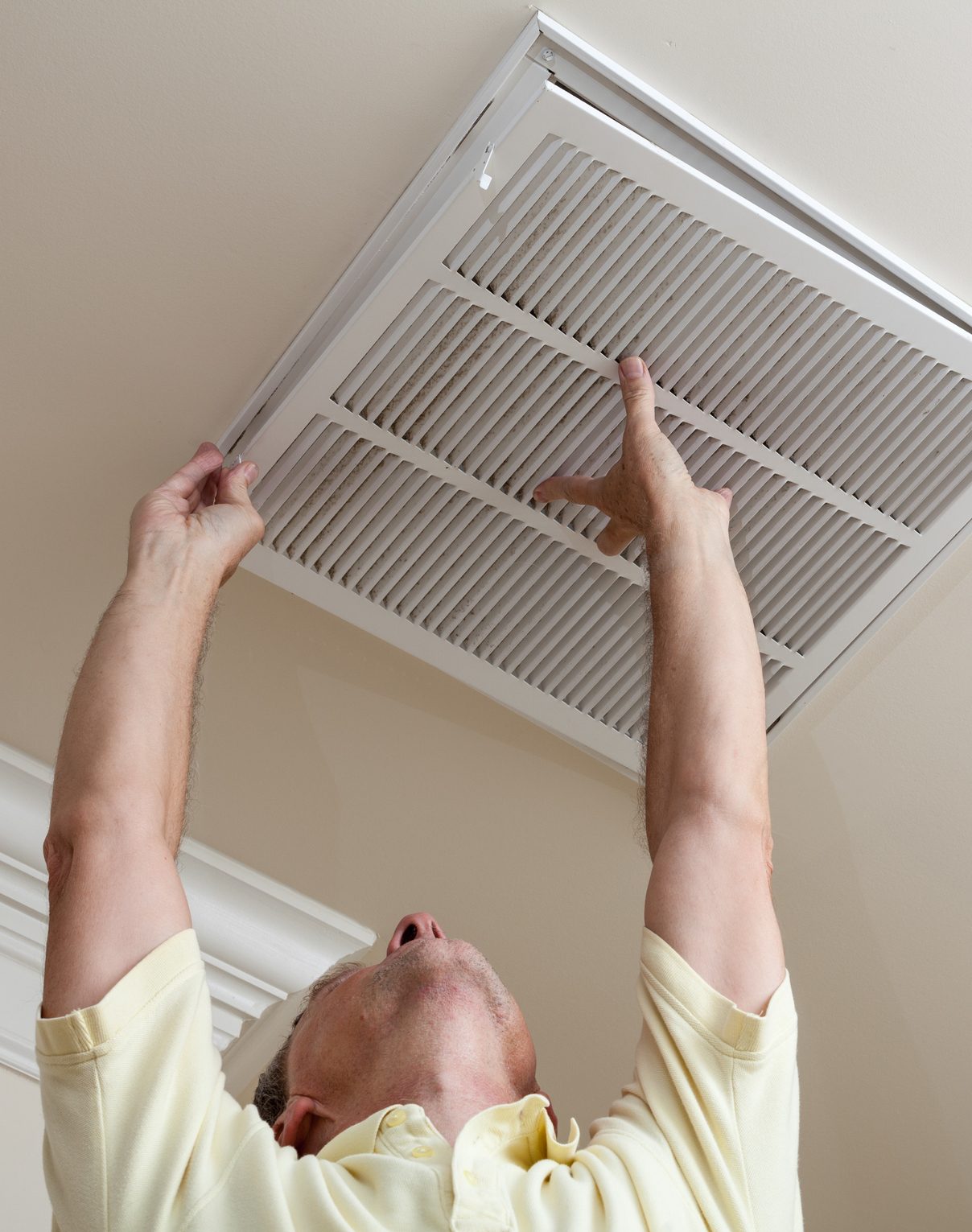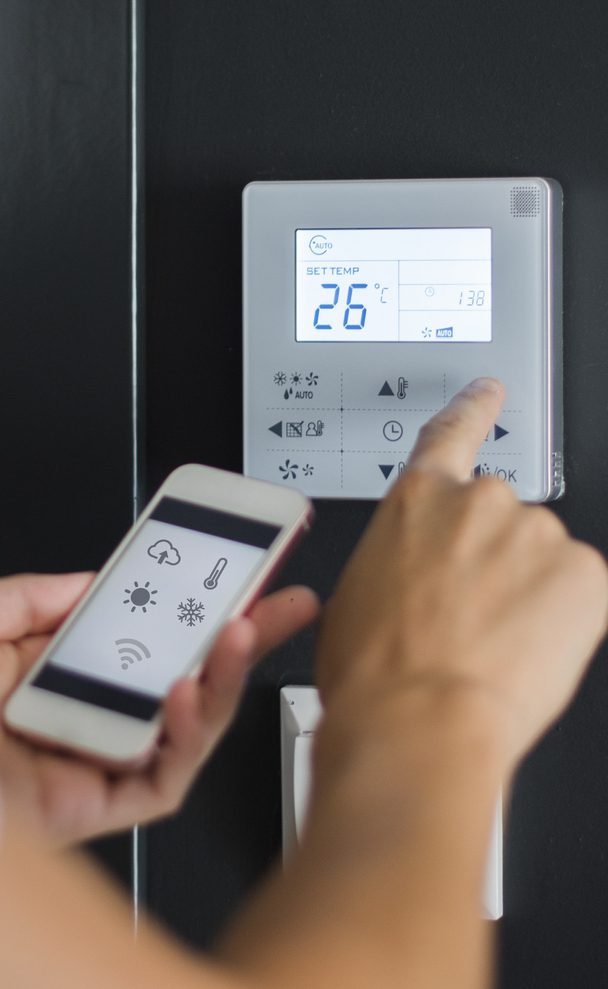Heating and Cooling
Keep Your Home Running Efficiently
No matter what season it is, your home is competing with the weather outside to make sure the inside temperature remains comfortable. As outside temperatures cool off in the winter and heat up in the summer, your heating and cooling equipment requires more energy to keep your home at the desired comfort level.
Home heating and cooling accounts for approximately 50 percent of the average customer's energy purchases. You can get control of your home's comfort level and your heating and cooling costs with a heat pump, properly installed duct insulation and a programmable thermostat.
Duct Systems
A properly installed duct system helps you live comfortably, while using energy efficiently.
The control and distribution of heated and cooled air in your home is carried out by the duct system. Significant amounts of heated and cooled air can be lost through leaks in ductwork. A properly installed duct system helps you live comfortably while using energy efficiently.
Did you know?
Locating ductwork during construction in conditioned versus unconditioned areas of the home can result in savings of more than 20% in heating and cooling costs.
Repairing duct leaks in existing homes can result in heating and cooling savings of as much as 30%. That's a big savings for a problem that's inexpensive to locate and repair.
Installing a duct system
The duct system should be designed by an accredited professional using industry-recognized procedures.
We recommend the following insulation specifications to ensure high efficiency and low operating costs:
- Check local codes for duct insulation R - Value. If construction design permits, install ducts inside the conditioned area.
- Seal all joints with duct mastic, duct mastic tape or the equivalent.
- Insulate and caulk/mastic all seams of insulating materials used to line the return-air plenum to avoid drawing air in from the attic or unconditioned areas.
Upgrading your home's duct system
Look for ductwork leaks in the air-handling unit and between the following components:
- individual sections of ductwork
- ductwork and boots
- registers
- ductwork and plenums
- ductwork and return-air chamber
- air-handling unit and plenums
- support platform and return-air chamber
We recommend the following insulation specifications if you are upgrading your duct system.
- Supply and return ducts should be insulated according to local and state codes.
- Mastic or seal all joints between ducts, supply plenum and heat pump and insulate against heat transfer.
- Seal heater closet paying special attention to pipes and wires that pass through walls.
- Seal off heater closet from the attic, if using a totally electric heat pump, so the system can't draw unconditioned air from that area.
- Upgrade attic insulation to R-30 or R-38.


Programmable Thermostats
A programmable thermostat could be a good idea if you're away from home on a regular basis, or want to automatically lower your energy use at night. It saves energy while you're away or asleep, and then brings your home's temperature back to the level you desire by the time you return or wake up in the morning.
If you're heating and cooling your home with an energy-efficient heat pump and you change the temperature control, a programmable thermostat will help you get maximum energy efficiency. Ask your heating and cooling dealer to install a programmable thermostat, and make sure it's the type specially designed for your heat pump.
If it's time to replace or upgrade the thermostat in your home, consider a programmable unit that:
- is compatible with your heating and cooling equipment.
- can keep your home + or - 1 degree Fahrenheit of your preferred temperature.
- adjusts temperatures to fit your lifestyle.
- can "learn" how to operate your heating/cooling system to compensate for periods of unusually hot or cold weather.
DIY Energy Saving Projects
A few materials and a little bit of time can help you cut your energy costs.
Weatherstripping
Small gaps around doors and windows can lead to big gaps in your budget. Fill in cracks and crevices now.
- Remove old weatherstripping, scraping with a putty knife if needed. Use a cleaning solution or warm, soapy water; clean the area inside and out.
- Test-fit the weatherstripping by holding it in place before you remove any backing or cut the material.
- Cut the stripping to length. With flexible types of weatherstripping – felt, vinyl, or foam – cut the material slightly longer than needed.
- Install the weatherstripping by either removing the backing or attaching it with the appropriate fasteners. Test the door or window by holding your hand around the jambs and check for air movement. At night, shine a flashlight around the door or window and have someone on the inside see if they can see any light. Light means air can get through too.
Tip: Even the smallest of cracks can make a big difference. An opening as small as the thickness of a nickel can create drafts and cold spots around your home and affect your energy usage. For small cracks and crevices, use a caulk rated for outdoor use. It will say on the label what the caulk is intended for and if it can be painted after it dries.
Insulation
Unconditioned spaces – basements, attics and garages – or insufficiently insulated areas can affect the comfort of your home in both summer and winter.
- Measure the area of the space requiring insulation to determine how much you’ll need. Insulation in attics, for example, should be at least 8 inches thick.
- Cut the insulation to fit using a utility knife and a straightedge as a guide. For uneven areas or narrow spaces, you may need to cut the insulation lengthwise.
- Position the insulation between the studs or joists with the vapor barrier (paper side) facing the living space. Start at the top of the wall when insulating between studs, or at the end of a joist when insulating a ceiling.
- Attach the vapor barrier edge (flange) to the inside of the studs using a staple gun. Be careful not to compress the insulation.
Ceiling Fans
Ceiling fans do more than just move air around. They help your heating system or air conditioner work more effectively, keeping you more comfortable year-round, while reducing your energy bills.
Most fans have a reversible switch and using this switch is the trick to making your ceiling fan work in both seasons.
In the winter, you want those blades rotating in a clockwise direction, which causes the hot air up near the ceiling to be redistributed to lower parts of the room.
In the summer, your blades should be rotating counter-clockwise, so that you can feel cool air being pushed down on you. This simple trick can make your room feel 3 to 4 degrees cooler and allow you to set your thermostat a little higher.

Savings Tip!
Making it a habit to turn off lights that are not being used is a good way to avoid wasted energy. Find more helpful ways to save.
More Ways to Save